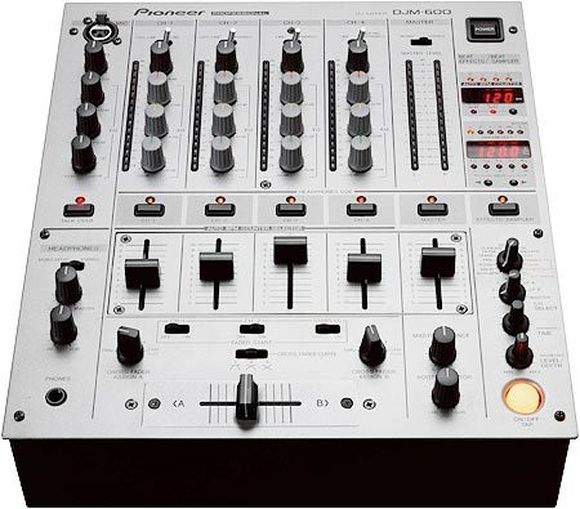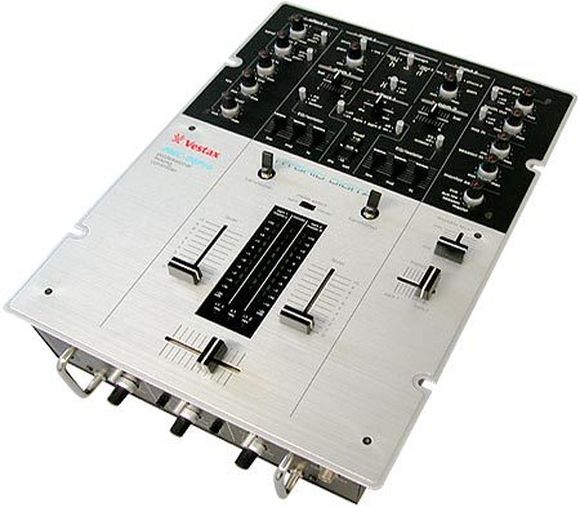2. Hardware
When choosing a mixer, the most important thing to consider is what style of mixing you will be doing. For example a house DJ could successfully mix on a scratch mixer, but would find things much easier on a club mixer. Mixer manufacturers often make a large distinction between these two styles of mixing in particular, and provide features that are useful to DJs from each genre respectively.
Club Mixer
Club mixers, sometimes referred to as installation mixers, are designed for long mixes and blends and usually offer more than two channels. Multiple inputs allow the connection, and importantly the simultaneous use, of more than one source. For example, a four input club mixer would allow two vinyl decks and two CD decks to be played all at once, with independent volume control of each source.

A good example of a top-end club mixer. Notice the four input channels with EQ, and the effects section on the right hand side.
Maximum flexibility is important in this kind of mixer because in addition to mobile use, theyre also designed to be permanently mounted in a clubs DJ booth, and may need to accommodate unusual and inventive setups with the minimum of hassle. You can normally expect to find a three or four band EQ on a club mixer, and on some of the higher-end units youll also get effects such as filters and delays.
Scratch Mixer
Scratch mixers are designed for short mixes and fast cuts and scratches. Scratch DJs normally require more control over the type of fade provided by both the cross- and line-faders, and also want other features such as fader feel and reverse. The dominating design consideration of this style of mixer is the achievement of the most ergonomic arrangement of the controls possible, while still allowing plenty of space to access the faders.

The classic scratch mixer design has two channels and quick and easy controls. Notice the sliders for EQ and cue control.
Normally these mixers will employ the highest quality faders with a very smooth feel and low noise. Features such as fader reversing and curve adjustment are also likely to be found, and these mixers are often physically very narrow so that decks on either side can be placed as closely together as possible.







